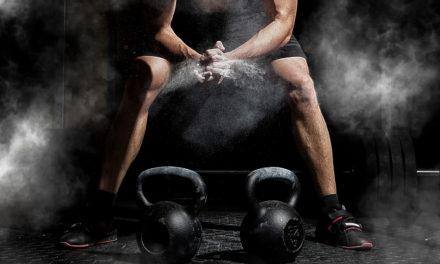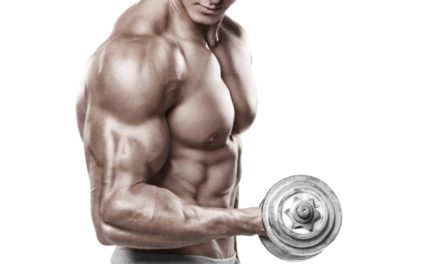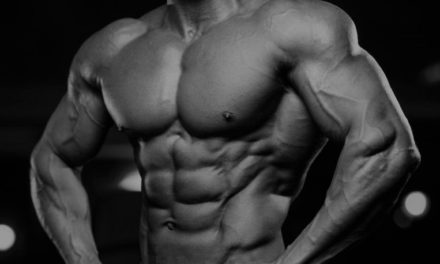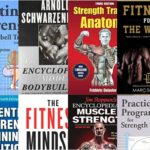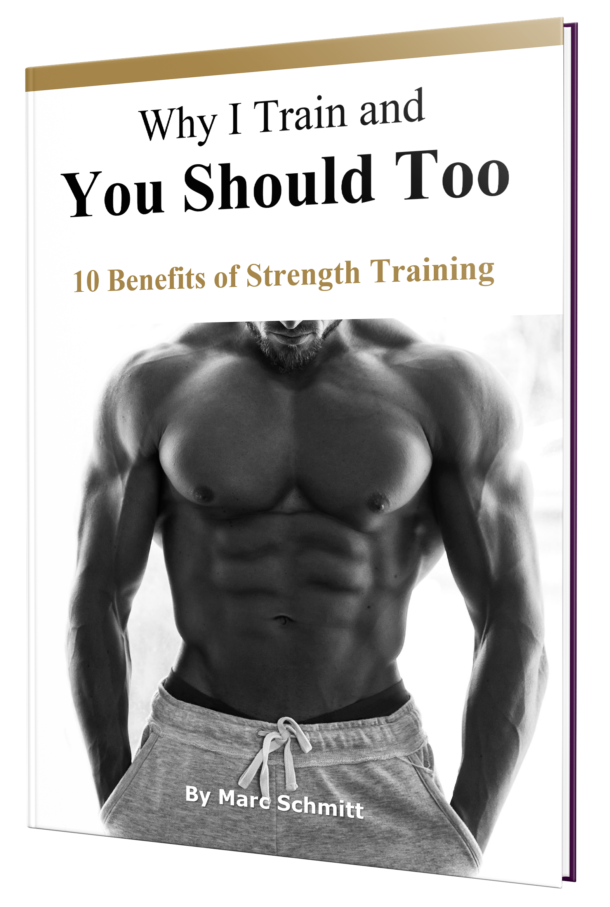Beginner’s Guide to Resistance Training
Are you a beginner who wants to dive into resistance training? Congratulations, you have come to the right place. Here is the complete guide in a nutshell:
Train a bit, eat a bit, sleep a bit, repeat.
Honestly, if you follow this advice, you will probably be better off than most people out there. Many people you see in regular gyms have no clear goals and often no idea what they are doing. Besides, most gyms out there do a poor job of educating their members about the underlying principles of strength training.
Free weights, especially a large barbell, can be quite intimidating if you do not know how to use it, but those multi-joint exercises are exactly what you need to see visible progress. Successful resistance training routines for beginners shouldn’t be very different compared to those of professional athletes.
This article will give you a comprehensive introduction to resistance training for beginners. Read ahead and learn how to kick-start your body transformation.
Avoid Isolation Exercises
One of my favorite beginner mistakes, which is observable in most regular fitness centers, is resistance training with isolation exercises.
A typical example – not the only one I could come up with, but undeniably the best – is the biceps curl. Those types of workouts will only help to demotivate beginners, especially if your body type is ectomorphic (naturally skinny) and you have difficulty gaining weight.
It is tough to avoid the resulting loss in motivation as visible progress is virtually non-existent. Stay away from isolating any smaller muscle groups if you are just at the beginning of your resistance training journey.
So, what should you do instead?
Target the Big Muscle Groups
It’s very simple: focus as early in your training as possible on compound exercises, which target several muscle groups at once; do this exclusively. You do not want to interfere with recovery in your rest periods by doing additional biceps curls or triceps pushdowns at the end of your workout. As a novice, you have the luxury for fast body composition changes within the first few months of training, so do not waste your precious time on simple isolation movements.
Build a strong foundation, and the rest will follow naturally. It is always surprising to see how easy resistance training with a machine becomes if you become proficient with an Olympic barbell.
After some progress, you will have enough options to change your program and include those exercises in your resistance training routine later on. Make sure you focus on compound exercises using an Olympic barbell first. Those multi-joint movements target the largest muscle groups for full-body development, which will result in fast and visible progress.
Focus on Strength
Another common advice for resistance training beginners in a gym is to use a repetition range of 8-12 per set.
The standard hypertrophy range used by bodybuilders to maximize mass gains is not a bad choice. However, it is not true that successful physique athletes never lift heavy. Most competitive bodybuilders are extremely strong. Sometimes, they used to be powerlifters before changing their career to bodybuilding. So, do not fool yourself into thinking you can gain significant size by not lifting heavier weights.
Remember: If you want to get bigger, you have to get stronger!
Most importantly, complete beginners have never triggered adaptations of the central nervous system and hence have a low-firing rate and weak muscle-fiber recruitment. It is more useful to focus on strength gains in the beginning, instead of too much focus on hypertrophy. If you have never trained before, you are extremely weak compared to your actual genetic potential.
So, build a strong foundation first before focusing on painting the walls for maximum looks.
Use the Following Exercises
So, what exercises are the most useful for a beginning strength athlete? The standard approach is to start with the following compound exercises.
These exercises will be very demanding at first, which is a good thing. Demanding means your body needs to adapt to this new exercise stimulus.
Exercises that require an Olympic barbell:
- Deadlift: The deadlift is the exercise that targets almost all muscle groups in our body, and it is perfect for building strength and size at every stage in your training life.
- Squat: Squatting will destroy your legs, and is probably the best low-body exercise out there.
- Bench Press: What do you want me to say? This is probably the most famous exercise out there, and one of the best upper-body size developers.
- Overhead Press: This one is awesome; it is my favorite exercise as it targets the V-taper muscles.
- Bent-over Row: This one will train your complete back, but it might be a little difficult in the beginning if you have a weak core.
Exercises that require only your bodyweight:
- Chin-Ups / Pull-Ups: This is the main exercise to build a wider back, which will strengthen the V-taper. It also helps with biceps development.
- Dips: One of the best exercises for upper-body development out there. It will target your chest and triceps.
Do Not Split – Go Full Body
How should you approach a resistance training routine as a beginner?
Do not engage in a split routine if you have just started to train. Beginners should train the whole body three times a week. Some slight alterations in the exercises make sense though.
If you have problems with recovery, I recommend only two resistance training sessions per week for the first week. I would also suggest not isolating the arms in the beginning, as you are too weak for additional isolated arm workouts at the end of your routine. Your arms will grow automatically along with your pull and push progress as they are always involved.
There are several good resistance training routines for beginners out there, and the truth is that most of them will bring results. I recommend you try out how you respond to the exercises. The most important thing is that you stick with a program for a while. Otherwise, it will be difficult to track the success of progressive overload.
Beginner Routine 1:
- Day 1: Squat (3×5), Overhead Press (3×5), Bend-Over Row (3×5)
- Day 2: Squat (3×5), Bench Press (3×5), Deadlift (1×5)
Make sure that you always have a rest day between each resistance training session. Rest periods between sets should be around 3-5 minutes.
Personally, after a few weeks of training, I would include chin-ups and dips in the routine and upgrade it.
Beginner Routine 2:
- Day 1: Squat (3×5), Overhead Press (3×5), Bend-Over-Row (3×5), Dips (3xfailure)
- Day 2: Squat (3×5), Chin-Ups (3xfailure), Bench Press (3×5), Deadlift (1×5)
After a while, you can include biceps curls and triceps pushdowns at the end of your workout routine to further strengthen arm development.
Progressive Overload
Another fundamental principle of resistance training is progressive overload. I have already explained that without strength, there won’t be any significant muscle growth. If you want to get stronger, it is essential to focus on lifting heavier weights over time and during every training session. Many people train regularly with the same weights for years. I want to stress that simply going to the gym and doing random exercises without a clear goal and progression has nothing to do with proper resistance training.
Increasing the training volume during every training session is a fundamental principle of strength training required for consistent progress.
I value my time, and I am sure you do too. So, apply progressive overload during every training session. It will be exhausting, but without effort, there will not be any significant progress. Here at FitnessForTheWorld.com, we train to see improvements, fast and every week. Stagnation for long periods is not an option and does not align with our resistance training philosophy.
V-Taper for Motivation
This is only true for males. For the ladies reading this, I suggest focussing more on lower body development.
It is an excellent idea to focus on building the V-taper muscles to increase motivation. Resistance training should be a positive, and motivating experience in your life. So, if you are tired or have a lack of motivation to do all the big movements, which can happen to many of us, focus on doing only the shoulder and the back exercises. Don’t go all out on biceps curls; try to focus on something that can result in progress and motivation.
Use the following exercises exclusively:
Overhead Press: Simply an excellent full-body exercise, and it looks cool too. This exercise has several advantages. It trains your shoulders and triceps perfectly and also has a slight impact at your upper back (trapezius). You will also train your core and your legs.
Bent-Over Row: I would choose the row over the chin-up because it targets more muscle groups. It will also engage the trapezius, which will lead to a Herculean physique. You also will develop a strong and stable core.
Chin-Up / Lat Pull-Down: The Chin-up is a perfect addition to develop a wider back. It will also train your biceps. Depending on your strength, you might want to start with the chin-up (as opposed to the bent-over row), as you cannot reduce the weight here.
Using only the bent-over row, the chin-up/lat pull-down and the military press will give you an excellent looking physique. The reason for this is the targeting of the V-taper muscles. Your legs will not help you with a V-taper. If you look at the standard fitness model physiques, you will realize that visible abs and broad shoulders are the main factors that stand out.
A well-developed V-taper looks impressive and will set you apart from the rest of the crowd.
Interestingly, most resistance training beginners train the biceps and the chest, which is precisely the opposite of what they should be focusing on. Focus on the back and the shoulders.
Example Routine:
- Overhead Press (3×5), Chin-Up (3xfailure), Bend-Over Row (3×5)
Same as mentioned above, alternate rest days with workout days. Rest periods between sets should be around 3-5 minutes for the heavy exercises and around 1-2 minutes for the Chin-Up.
You can easily add a leg press session of 3×10 at the end of this workout as well to achieve a full-body program, which is a little less demanding than the squat and deadlift versions above.
Deadlifts and Squats
If you love squatting and deadlifting, you can skip this part.
Everybody these days will tell you that the squat and the deadlift are essential and should be part of any resistance training routine. The goal at FitnessForTheWorld.com is to provide you with the best possible program design for your particular situation.
The deadlift, as well as the squat, are awesome exercises, without a doubt, but the main issue I see with squats and deadlifts is the significant stress they put on the nervous system, which makes you strongly fatigued. Doing them with extreme weights can especially lead to a loss of motivation during your workout. You might also have reduced motivation to go to the gym the next time. To avoid this over-taxation of the nervous system, try not to overdo it with those two exercises.
Make sure to include the squat and the deadlift in your routine as you will realize real-world improvements very soon (e.g., stair climbing will get significantly more comfortable). I would recommend you squat heavy, in the beginning, to achieve fast adaptations and only continue the progressive overload if you are not happy with the size of your legs compared to your upper body.
Available options:
- Switch to the leg press, which is an excellent supplement for the squat and partly also the deadlift.
- Reduce the weight for the squat or use the exercise less frequently.
- Consider doing the deadlift only once per week or once every two weeks. I think a deadlift should be heavy, so I prefer doing them only once per week instead of de-loading the exercise itself.
Listen to your body and level of motivation, and adjust your workout accordingly.
Nutrition
I have excellent news. As a resistance training beginner, you will be able to lose fat and build lean muscle mass at the same time at a surprisingly fast rate. Even without any adjustment in your diet, you should be able to see progress.
Anyway, the goal is to achieve as much positive change as possible. So, I highly recommend you try to adjust your nutritional intake to support your training goals.
General recommendations:
- Reduce the intake of junk food and processed food
- Eat complex carbs, quality protein, and healthy fatty acids
- Have a raw idea of your caloric intake per day
Recommendations based on your current body composition:
- Overweight: Eat similar amounts of foods, but try to cut out processed and junk food and focus on high-quality nutrients.
- Normal: Stay in a small caloric surplus and try to focus on a healthy diet.
- Underweight: Start to eat more food to create a sufficient caloric surplus.
If you are extremely overweight, 25% body fat or more, I suggest you do not change your caloric intake. You have already created the environment for growth, so your body will be able to build muscles efficiently in this state of energy surplus. Without losing any weight, it is possible to lose around 9% of body fat only due to resistance training. The more overweight you are, the faster you will lose fat.
Nutrition is a vast topic, and your diet should be adjusted depending on your personal goals. If you are extremely overweight and want to know how to drop your fat levels as fast as possible, make sure to check out the following article: 10 Kick-Ass Tips to Defeat Your Excess Body Fat
Listen to Your Body
If your nutrition is in place, and if you stick to the recommended three training sessions per week, it will be tough to become strongly fatigued. If you have the feeling that your resistance training sessions are too easy, try to increase the weight or add one set at the end.
Do not listen blindly to anybody out there. Resistance training is a huge field and there are endless tips on how to structure your program. Apply logic and listen to your body. If you do not feel good during or after the training because of too much stress, consider changing your routine. Strength training done correctly will improve your mood and confidence after every session, and training in that positive zone will help you to stay motivated in the long run.
Summary
Resistance training can be a little daunting in the beginning, but if you stick to it you will realize that it is an awesome addition to your life. Follow the tips I have given in this article and your resistance training journey will be filled with progress and astonishing results.
- Avoid Isolation Exercises: Guys, stop doing too many biceps curls; it will not make you grow.
- Train the Big Muscle Groups: Use compound movements to train every muscle group within your body.
- Focus on Strength: If you want to get bigger, you need to get stronger. So, lift heavy and apply progressive overload for maximum results.
- Use the Following Exercises: Deadlift, squat, bench press, overhead press, bent-over row, chin-ups, and dips.
- Do Not Split – Go Full Body: Train your whole body three days a week.
- Progressive Overload: Make sure to increase your weight every session.
- V-Taper for Motivation: If you want to create a good-looking physique, try to focus on the V-taper muscles, which are mainly the shoulders and the back.
- Deadlifts and Squats: If you like these exercises, go ahead and do them! However, if you feel too fatigued, reduce the weight or frequency.
- Nutrition: If you are overweight, don’t reduce your caloric intake while doing resistance training. If you are skinny or normal, start to create a slight caloric surplus for visible progress and adequate recovery between workouts. Always eat clean food.
- Listen to Your Body: Never listen blindly to anyone. We are all different, so always apply some logic and listen to your body.
So, what now?
Hit the gym and start your resistance training journey, that’s what!
Recommended further reading: 10 Kick-Ass Tips to Defeat Your Body Fat
If you are interested in a personalized training plan or online coaching, have a look here.
If you found this post helpful, I’d love for you to kindly share it with your friends and followers on social media – just click any of the buttons below! Thank you

